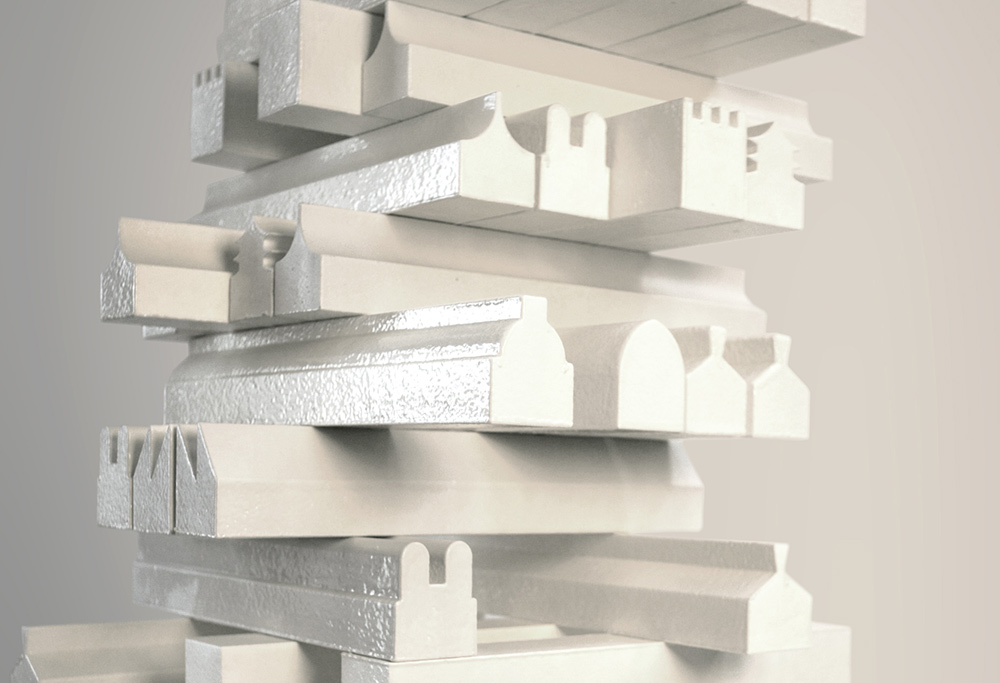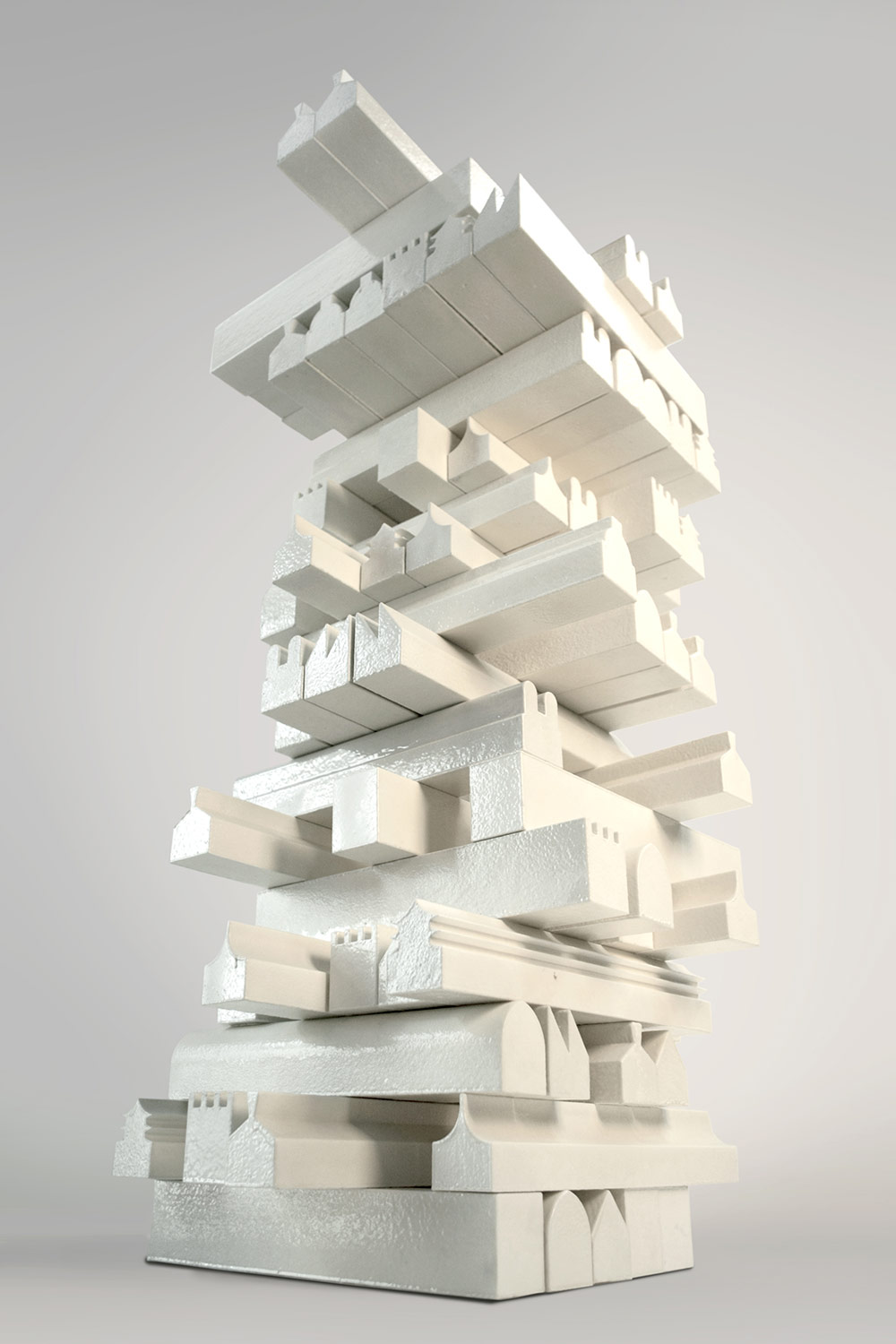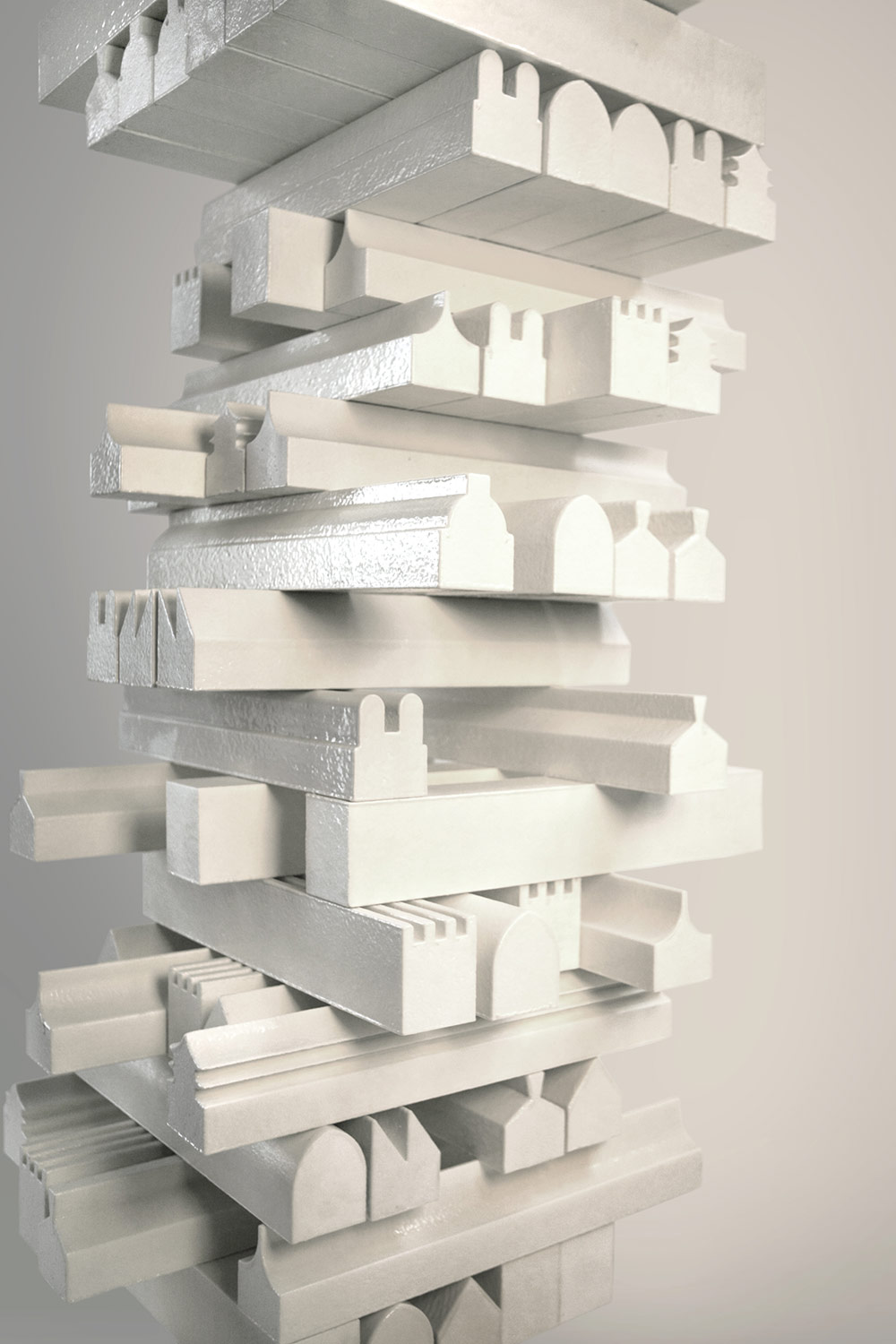PRIMITIVE ABITATIVE
PRIMITIVE ABITATIVE
Theme: Babilonia project during the exhibition “Quali cose siamo”
Correlated events: “Quali cose siamo” (The Things We Are), Triennale Design Museum, 26th of March – 27th of April 2010
Date of production: February 2010
Description/dimensions: 70 x 70 x 220 cm (l x d x h) model scale 1: 300
Suggestions: diversity, modular elements, sostenibility
Materials/technologies: rigid polyurethane
Design: Nucleo_Piergiorgio Robino + Nicola Bartoccelli
Nucleo has been asked by Alessandro Mendini and Silvia Annicchiarico to be part of the Babilonia Project with a new project called “Primitive Abitative”. From the 26th of March to the 27th of April 2010, it will be exhibited at the exhibition Quali cose siamo (The Things We Are), in the Triennale Design Museum.
“Primitive Abitative” (Primitive Housing) is a tower that gives up on certainty. It’s an unsettled structure integrating a diversity of cultures. Primitive Housing is based on iconic typologies generated from the same common root, they are local expression of the universal inhabit act.
The project shows the grammar of the tower, revealing the possibility to share an unexpected vital and innovative upward direction. It’s a collapsed tower in which every part reacts to the construction of a non-hierarchical architectural structure.
The project is inspired by a well known board game but with the opposite
objective: to create the higher tower with a limited number of pieces, finally becoming the metaphor of the current human condition.
A world able to raise only with the cooperation and the participation of all parts, managing the available resources.
QUALI COSE SIAMO (THE THINGS WE ARE)
Answering the question “What is Italian Design?” Starting from 27th of March 2010 at Triennale Design Museum a new exhibition is presented. An Interpretation of Italian design entitled Quali cose siamo (The Things We Are).
Triennale Design Museum confirms its role as a dynamic museum, capable of being constantly renewed and providing visitors with unprecedented and diversified perspectives, viewpoints and approaches. It is an emotional and involving museum, a live organism capable of challenging its own approach, denying it and asking new questions.
Triennale Design Museum is directed by Silvana Annicchiarico and Alessandro Mendini is the scientific director. The theoretical approach upon which the third interpretation by Triennale Design Museum is based, Italy hosts a multifaceted and endless world. Characterized by invisible and unorthodox design, parallel to the world of institutional design. The observation points is shifted on history and the stories originating from individual objects that, arranged sequentially, form a network of relations and connections, a multifaceted landscape liable to lead to unbalance and puzzlement, albeit rich in emotion and entertainment.
A selection of works by Masters, artists and young designers starts a dialogue with unexpected objects that initially do not seem to form a consistent set but in reality are not what they seem. If analyzed from different viewpoints, they show complex project schemes, and provide further and unprecedented evidence of Italian creativity. They contribute to supply a different definition of the identity and essence of Italian design.
The museum “stages” Italian design by renewing not only its key-topic and scientific background but also the installation which, in the case of the present interpretation, is entrusted upon Pierre Charpin.
Silvana Annicchiarico states: ”With the first interpretation we have compared and contrasted Peter Greenaway’s baroque approach with the eclectic attitude of Italo Rota and the radical stance of Andrea Branzi.
In the second interpretation, we started a dialogue between the classic, rigorous and rationalist clarity of Antonio Citterio and the scientific and didactic approach of Andrea Branzi.
We now create a short circuit between the poetic and conceptual minimalism of Pierre Charpin and the punctilious and surprising encyclopedic approach adopted by Alessandro Mendini, with his endless and ever-changing passions for all forms of material culture.
Once again, our goal is to be surprising and revealing, turning the museum into an unexpected environment. We wish to provide visitors – specialists and art lovers alike – with an approach leading to the revision of certainties and stereotypes and, once again, to a reflection on how objects contribute to determine what we are”.
Triennale Design Museum
Opened in December 2007, Triennale Design Museum hosts a permanent collection (including the Permanent Collection of Italian Design, drawings by Alessandro Mendini, the Giovanni Sacchi Collection and Alessandro Pedretti Collection) and it is also the hub of a large network of artistic resources scattered all over the Italian territory (private collections, corporate museums, specialist collections and small thematic collections) with which a close collaboration has been established.
The Restoration Lab of Triennale Design Museum is a centre devoted to the “memories of modernity” as well as experiments with new technologies. The main mission of the Lab is starting research and investigation initiatives on materials science aimed at prevention, preservation and restoration.
The museum operates in close collaboration with Politecnico di Milano, Department of Chemistry, Materials and Chemical Engineering, supporting the diagnostics and investigation of materials science.
The museum host two permanent spaces: Agorà Theatre, designed by Italo Rota, and CreativeSet, designed by Antonio Citterio.
The former, fully made of wood, hosts events, conferences and performances. The latter, devoted to exhibitions and events, for the second consecutive year will host the MINI&Triennale CreativeSet cycle aimed at promoting and enhancing new modern Italian design.
All activities by Triennale Design Museum are supported by Electa, the official publishing house of the museum.
Open to public from 27th March 2010
Director: Silvana Annicchiarico
Scientific Director: Alessandro Mendini
Exhibition design: Pierre Charpin
Catalogue Electa
© 2013 Studio Nucleo



